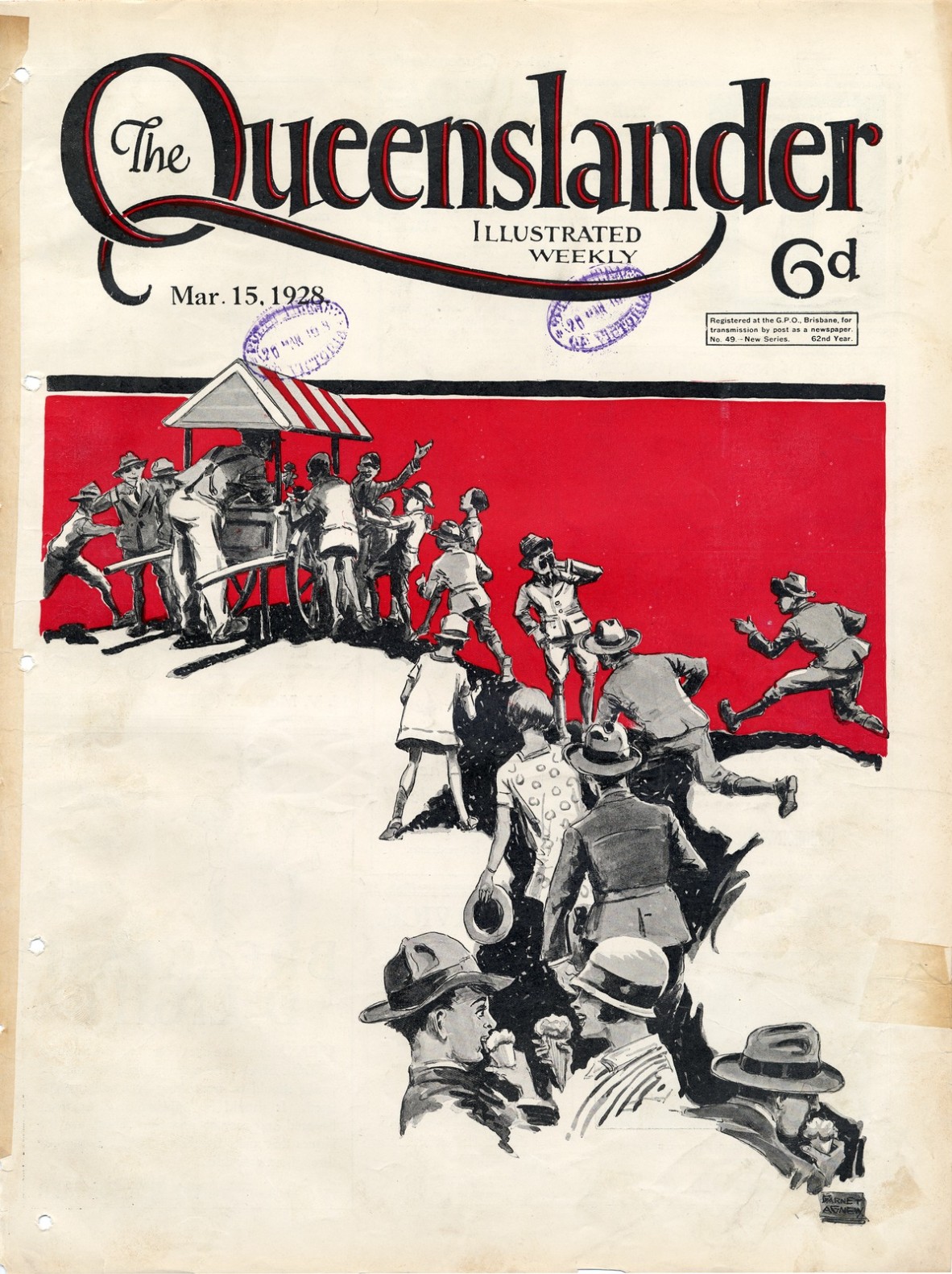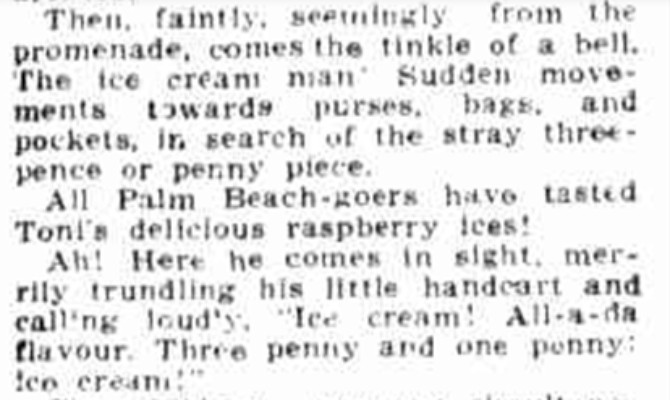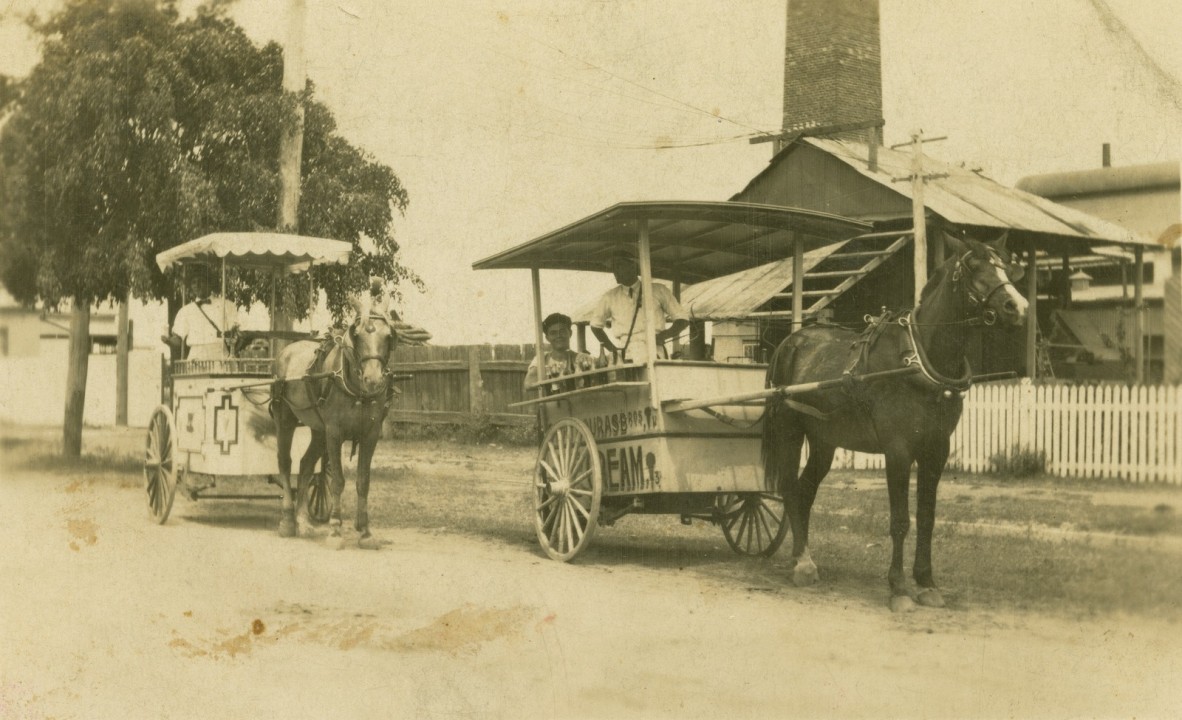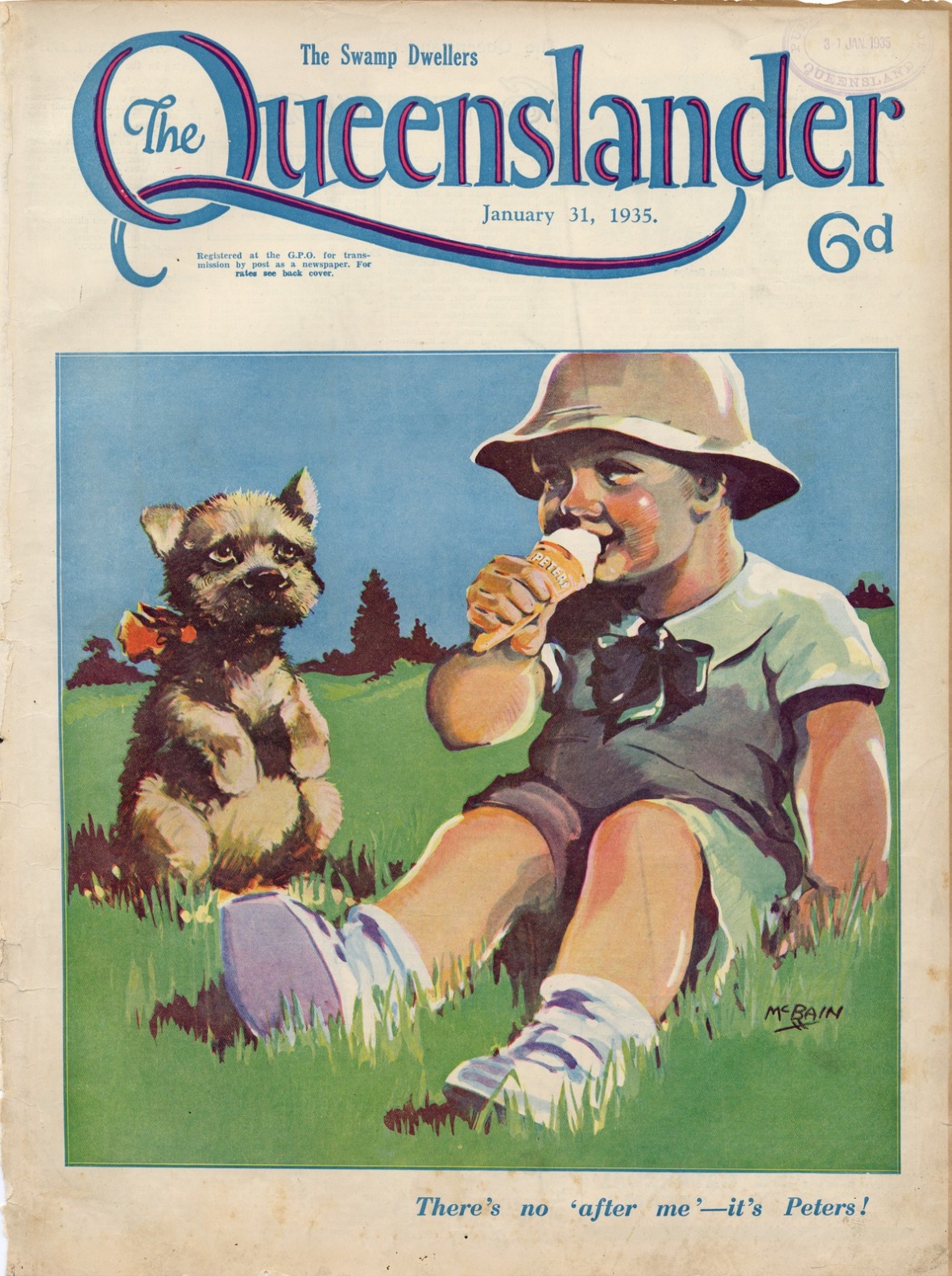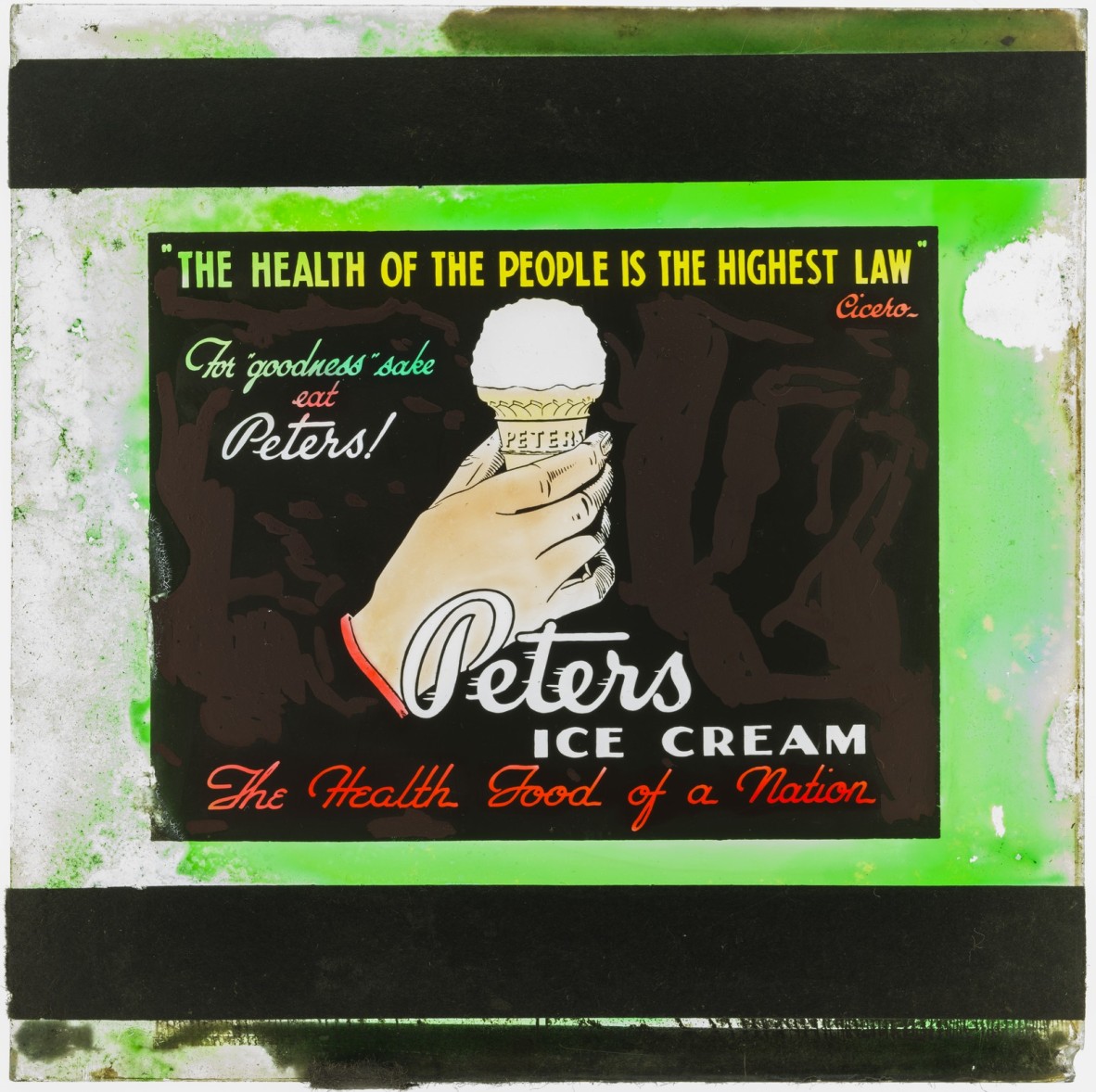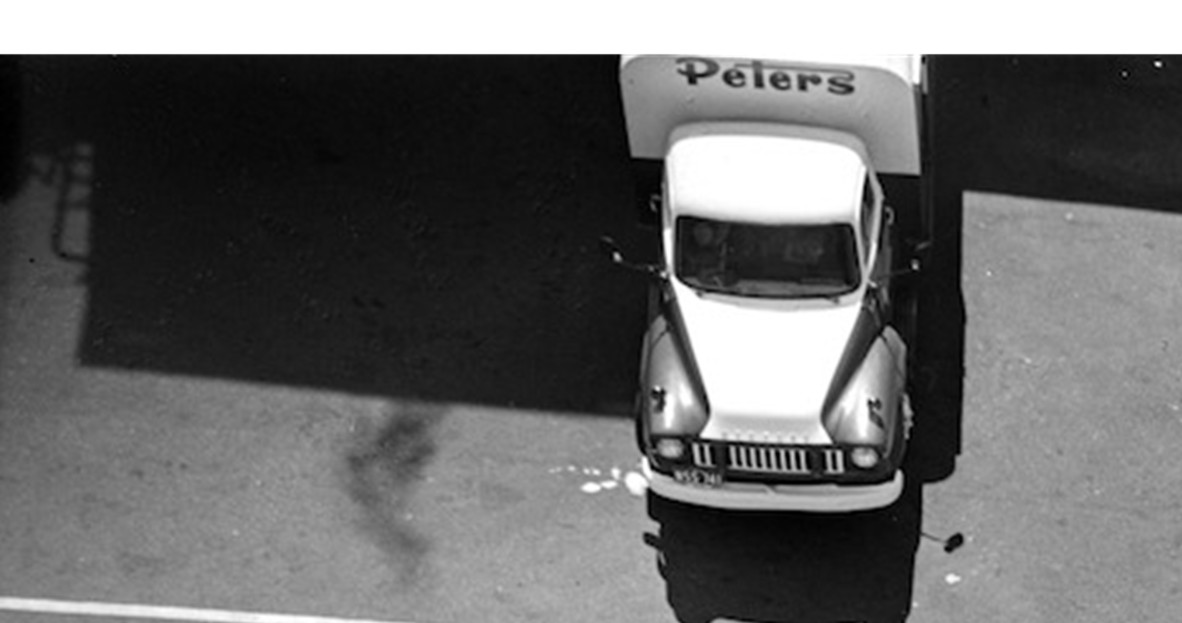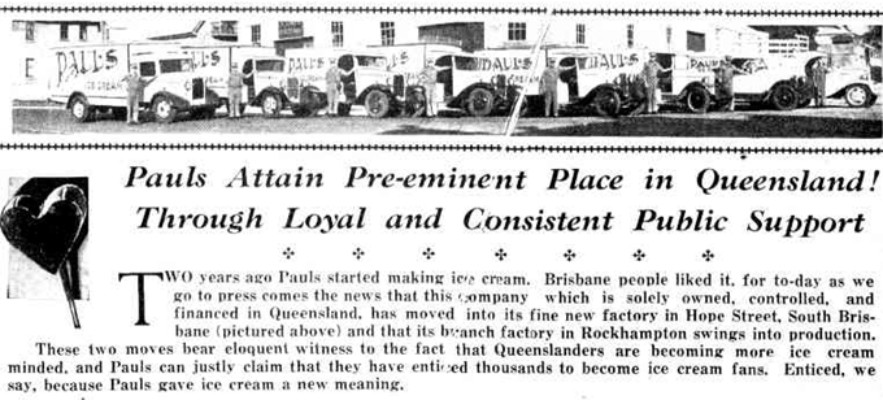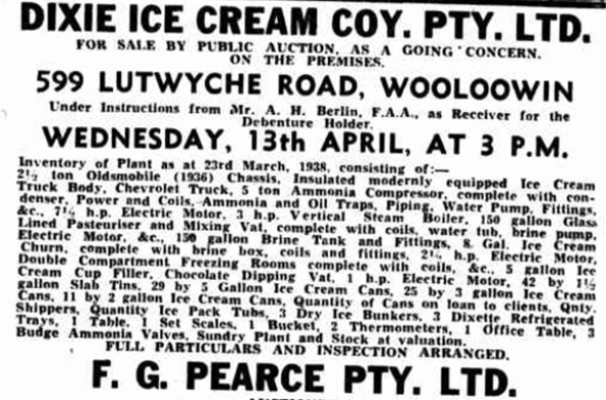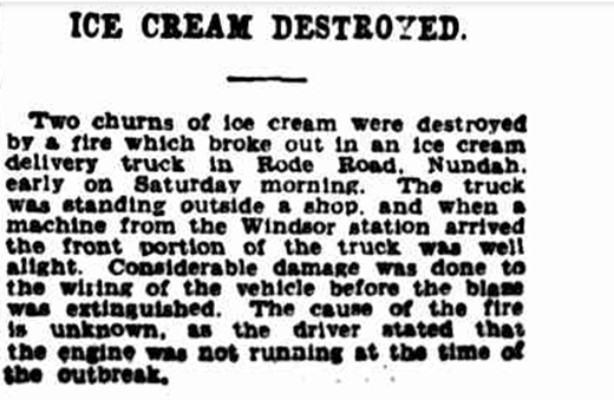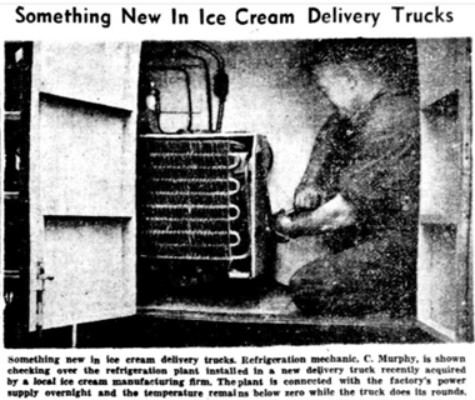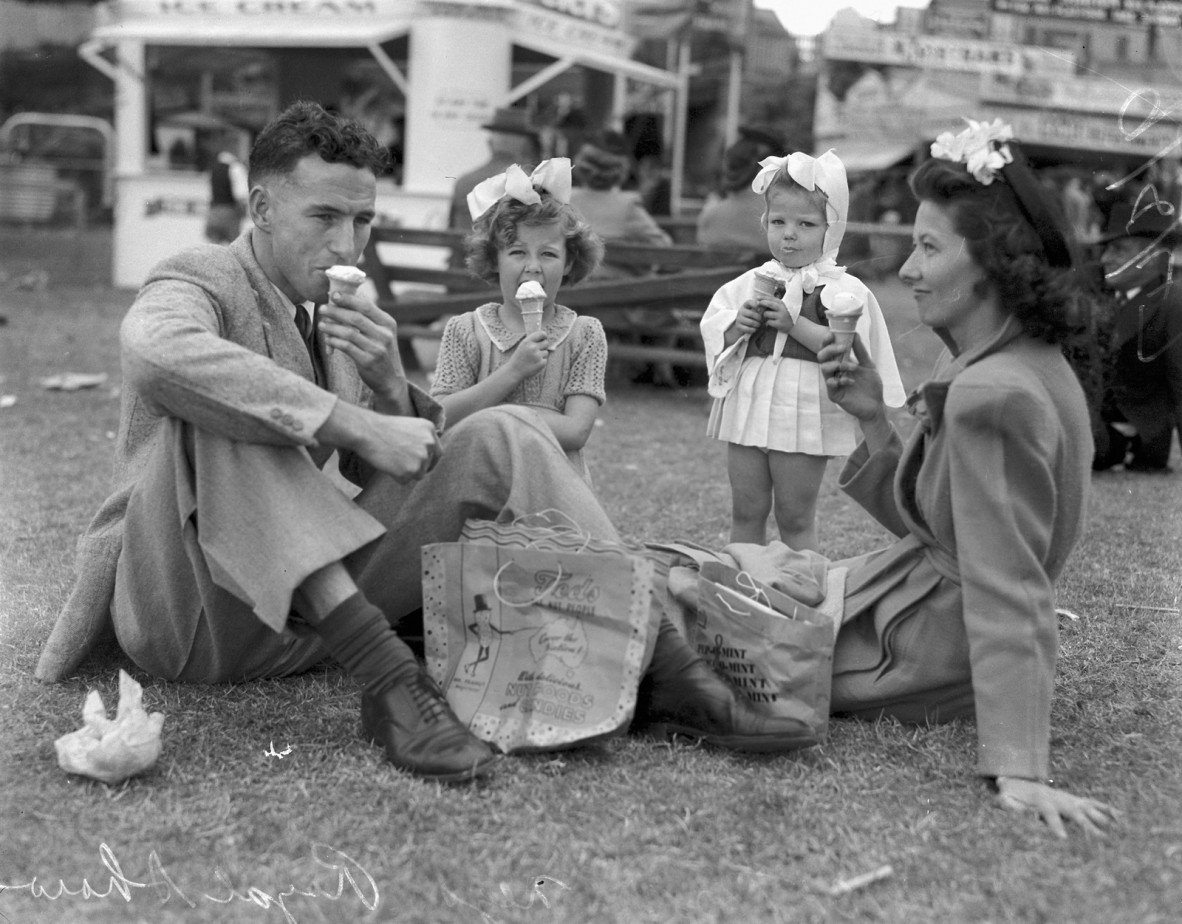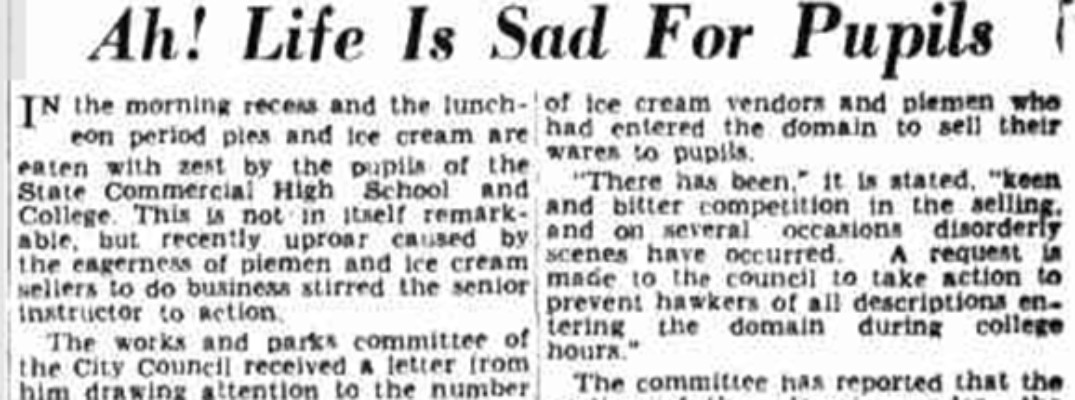Bells, bugles and Greensleeves: The sound of the ice cream truck over the years
By Christina Ealing-Godbold, Research Librarian, Library and Client Services | 8 December 2023
Have you ever wondered about the history of the ice cream truck in Australia? The first ice cream trucks rolled onto Australian streets in the 1950s. These trucks, adorned with colourful and enticing illustrations, quickly became a fixture at beaches, parks, and residential neighbourhoods, bringing joy to children and adults alike. But perhaps what is most distinctive and memorable about them is the sound!
Nothing brings people of all ages running quite like the sound of the ice cream cart or truck. Earlier ice cream trucks and carts had bells and bugles to attract attention but in Australia, the Mr Whippy trucks played the most recognisable tune 'Greensleeves', as they also did in Britain and in New Zealand. For us it is the sound of summer. In other countries, the tune was different but the approach the same – play the ice cream tune through loudspeakers on the vehicle as you approach the beach, park or suburban street. In America, it was “The Entertainer” by Scott Joplin or the children’s song “Pop goes the Weasel” and in France, it was "Frere Jacques”.
However, ice Cream delivery began well before Mr Whippy. Mr Whippy arrived in Australia in 1962 when ten Commer “Mr Whippy” trucks were imported into Australia in their distinctive pink and white colours. The founder of the company, an Englishman of Italian heritage named Dominic Facchino was passionate about the history of Henry VIII and so chose “Greensleeves” as the song to herald the arrival of the ice cream trucks. Supposedly written about Anne Boleyn in 16th century England, Greensleeves was a song for lute and vocals. What did it have to do with ice cream – absolutely nothing! But now it is known as the ice cream song.
Ice cream and ice desserts were the delight of the twentieth century. Hotels, dining rooms and cafes all advertised their ices and ice cream, competing to make more interesting desserts by combining fruit and other sweets with ice cream. Ice Cream Sundaes were eaten, with the ice cream drenched in sweet sauces and topped with cream and nuts. In Queensland, ice cream and ice desserts were particularly important in our developing cuisine. Ice cream was associated in advertising with enjoyment, holidays, romance and simply having fun. Picture theatres developed “Ice Cream Matinees” to entertain children. Fine dinner parties featured ice cream novelties on their menus as well as grand desserts with jellies, cream and ice cream.
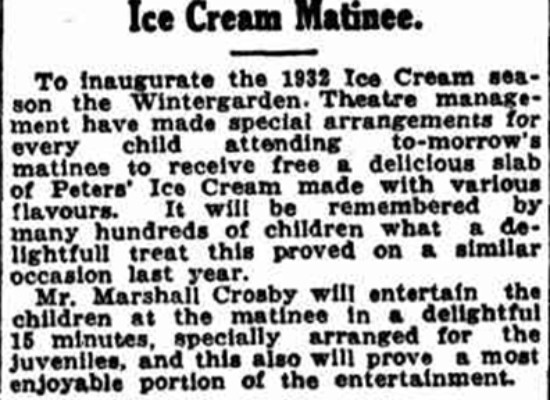
The Evening News, 30 September 1932, p 13
Ice Cream Vendors
In early twentieth century Queensland, Ice Cream was delivered by horse and cart, with large blocks of ice in the cart to keep the ice cream cool. Ice cream sellers were itinerant, operating in the summer season and were often known as Ice cream hawkers. Shopkeepers in seaside areas requested councils to “move them on” as they damaged their trade. There were also some concerns about bacterial organisms in the ice cream if it had not been kept sufficiently cold. Beginning in 1903, ice cream vendors had to be registered and licensed in Queensland.
At the beach, ice cream was often sold from a hand cart. The vendor rang a bell to announce his arrival and the tinkle brought children and parents from all over the sand. Flavours included vanilla, chocolate, pineapple, banana and raspberry. The many flavours of ice creams like cookies and cream were to come later, an influence of the American ice cream craze. It was also reported that some vendors sounded bugles to announce their arrival but this was not popular with local councils who pronounced the sounds of bugles to be a public nuisance.
Ice cream was sold at stores and cafes but also ice cream sellers using hand carts, horses and carts and motor vans or trucks moved the valued foodstuff from factory to the consumers. In Palmwoods near Nambour, the Gympie train bought the ice cream from Nambour to events. The mid -1920s saw the last of the horse and cart vendors and by the 1930s, it was certainly motor trucks that delivered ice cream. Ice cream carts operated in Queensland regional centres too, and the Lathouras Brothers of Bundaberg had beautifully decorated cars pulled by patient horses.
In Brisbane, the Peters Arctic Delicacy Company at Boundary Street South Brisbane became the standard fare to fill those cones. The new state of the art modern factory was opened in 1928.
Mr Frederick Peters,an American immigrant, established ice cream factories in several Australian states. Known as Peters American Delicacy Co Ltd, it was the largest ice cream business in the British Empire when Frederick Peters died in 1937. Peters labelled ice cream as a health food based on the dairy content and his marketing included claims of hygienic processes of manufacture and delivery in order to address some of the earlier fears about microorganisms in ice cream.
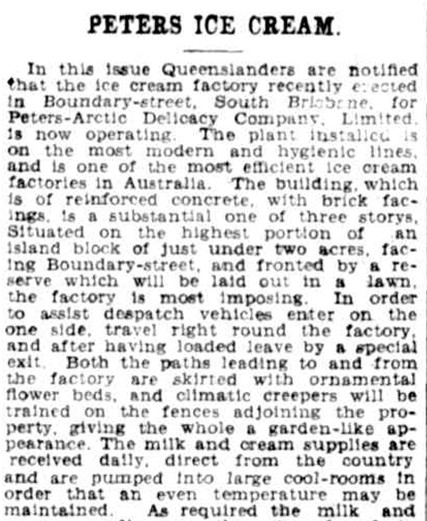
In 1936, another company, Pauls Ice Cream opened a factory in South Brisbane. The Pauls Company also had a fleet of insulated trucks to carry the magic confection.
School, church and community groups regularly visited the Pauls Ice Cream factory on tours (with free ice creams, of course) right up until recent times, demonstrating the fascination of Queenslanders with the delightful iced confection.
Perhaps because of the success of Peters Ice cream and then the entry of the Pauls Company into the local market, Dixie Ice Cream Coy faced bankruptcy in 1938 and had to sell its entire operation at Wooloowin. The advertisement in the newspaper informs us that a 2 and a half ton Oldsmobile 1936 truck fitted for ice cream delivery was part of the sale, along with a pasteuriser and mixing vat, an 8 gallon ice cream churn, 29 five gallon ice cream cans and 25 three gallon ice cream cans. There were many other items listed, giving an excellent illustration of the many technical items required for the production of ice cream.
Despite the new linings for ice cream trucks and the development of refrigeration, there were a number of fires and accidents with the delivery trucks. Ice cream truck bodies required stainless steel insulation, often up to seven inches in thickness. In the 1930s, a product called Celotex was also used for insulation. It was essentially a fibreboard made from sugar cane waste.
Large trucks like those owned by Peters and Pauls could carry up to 300 gallons of ice cream. However, wiring and early refrigeration technology were problematic and on occasion caused fires. On each occasion when reported in the newspaper, there was little concern for the vehicle – the most reported tragedy was the loss of ice cream!
At movie theatres, cafés, restaurants, beaches, parks and social functions, the required ingredient was Ice Cream. Queenslanders loved it. At the Brisbane Exhibition early in the 20th century, food and fruit store holders demanded that ice cream not be sold inside the grounds as they couldn’t compete. Despite their protests, Ice cream vans became a key feature of the Ekka and still are today.
At the State Commercial High School, adjacent to the Botanical Gardens and now the site of QUT, it was reported that in 1937, morning recess and luncheon period had become the scene of uproar and unruliness as the ice cream and pie vendors battled for competition. Apparently, “Ice cream was eaten with zest”.
Associated with the arrival of the Ice Cream Man, whether by foot, horse and cart or motor truck, the tinkle of the bell, the sharp roar of the bugle or the gentle song of Greensleeves never failed to drum up business.
Further research
- Peters Ice Cream factory negatives
-
Ruby Violet's ice cream dreams : ice cream, sorbets, bombes, peanut brittle and more / Julie Fisher.
-
Ice creams and other frozen desserts / by J.H. Frandsen and D.H. Nelson ; <With bibl.>
-
An encyclopedia of candy and ice-cream making / Ed. by S. Joseph Leon
-
Licks, sticks & bricks : a world history of ice cream / Pim Reinders
-
Peters Ice Cream Factory: The Ice Cream for all Nations (blog)
More information
One Search catalogue – https://onesearch.slq.qld.gov.auopen_in_new
Library membership – https://www.slq.qld.gov.au/services/membership
Ask a librarian - https://www.slq.qld.gov.au/services/ask-librarian
Plan your visit – https://www.slq.qld.gov.au/visit
Comments
Your email address will not be published.
We welcome relevant, respectful comments.
